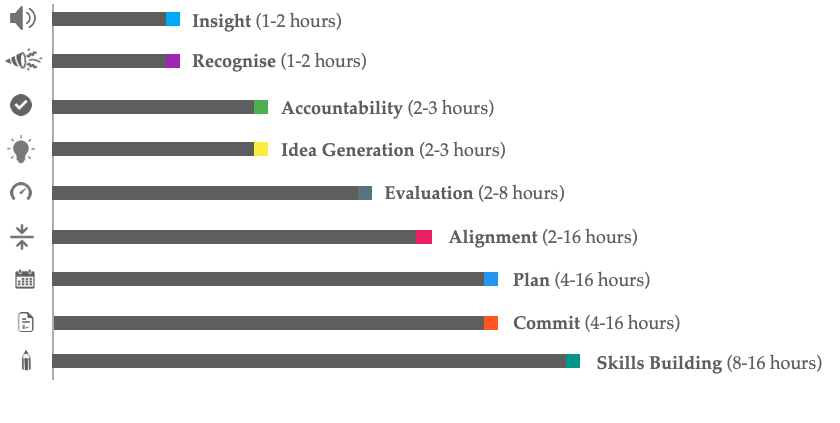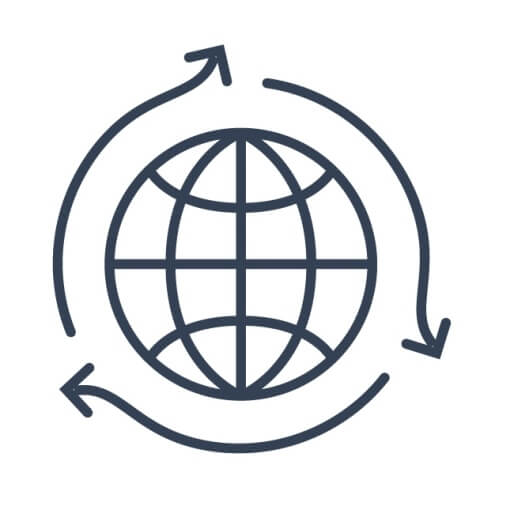
In the previous article, we shared the different types of gaps an event can help you close. Here, we are going deeper into how exactly you will approach said gaps. For example, the event’s main goal (gap) might be a Culture gap. The next question is, what exactly do we achieve? Measure the culture? Align people around a new culture? Educate people on culture? Brainstorm ideas? Depending on our research, we have narrowed nine building blocks of every event that might help you move closer to closing the gap.
The chart on the right shows how long, in our experience, it takes for each building block to be accomplished. Note, however, that times vary significantly by group size and complexity.

Insight
People walk away with 3 main messages, create awareness, share information.Example: Create awareness of how people’s behaviors impact organizational results
Techniques: Analogies, reflection, visualization, dramatization, creating expectations, storytelling, and demonstrations.
Idea Generation
Encourage creativity and idea generation, explore possibilities.Example: Brainstorm ideas for new product.
Techniques: Brainstorming, design thinking, simulation.
Plan
Plan tasks, explore assumptions, and agree on goals.Example: Set your team up for success by efficiently prioritizing initiatives and evaluating alternatives.
Techniques: Dependencies analysis, decision-making frameworks, physical prioritization or impact matrices.
Recognise
Create a sense of belonging, motivate.Example: Foster team spirit by celebrating achievements and recognizing individual contributions.
Techniques: Award ceremony, physical trophy or certificate presentation.
Evaluation
Gain valuable feedback. Define problems and their root causes.Example: Uncover insights by evaluating how customers perceive the organization.
Techniques: Feedback, causal analysis, competing hypothesis analysis, stakeholder analysis, physical whiteboards.
Commit
Instill urgency through commitments and effective resource allocation.Example: Team members to agree on specific individual short-term goals.
Techniques: Commitment boards, action item tracking, implementation plans, physical commitment walls or charts.
Accountability
Follow up on previous commitments.Example: Drive results by ensuring accountability for assigned tasks.
Techniques: Progress tracking, action item lists or boards, check-in meetings, accountability partners, progress charts or task boards.
Alignment
Improve collaboration and break the silos.Example: Achieve synergy and cohesion within your team to improve collaboration and achieve shared goals.
Techniques: Team-building exercises, collaboration workshops, icebreaker activities, get to know exercises, simulations.
Skills Building
Facilitate skill development and knowledge sharing. Upskill participants with techniques and tools.Example: Train leaders on how to be change champions.
Techniques: Workshops, skill-building activities, coaching, knowledge-sharing, interactive exercises, simulations.





